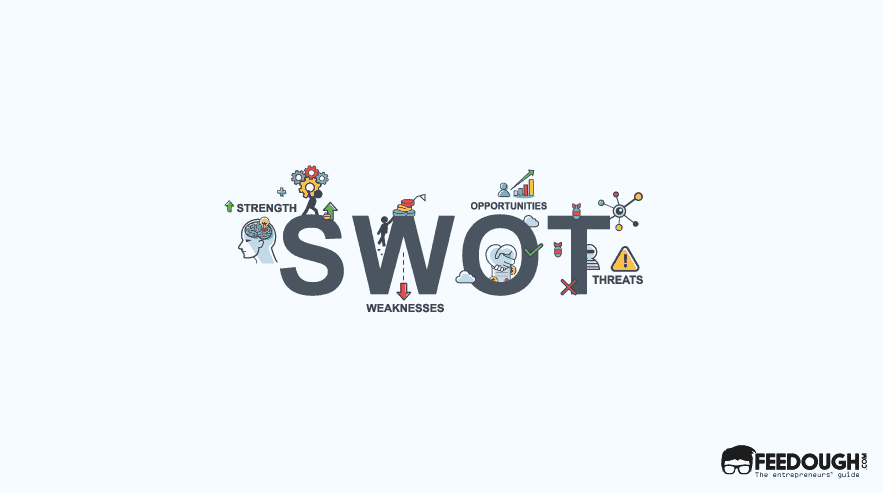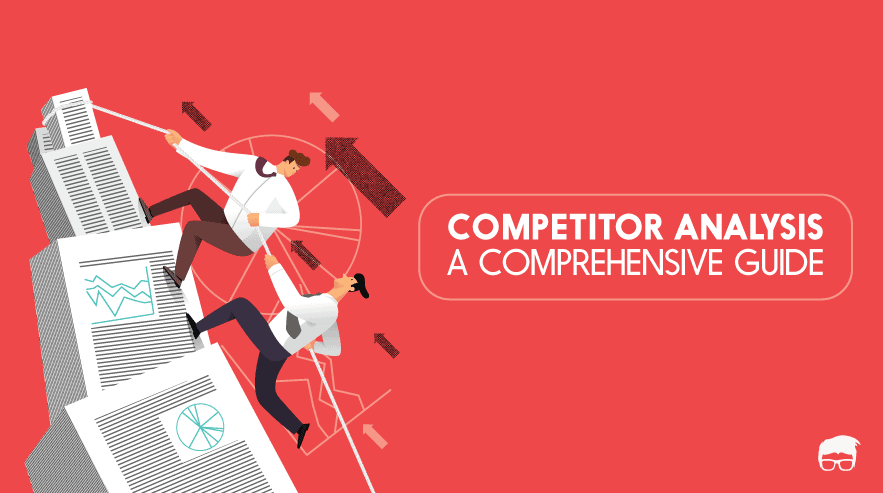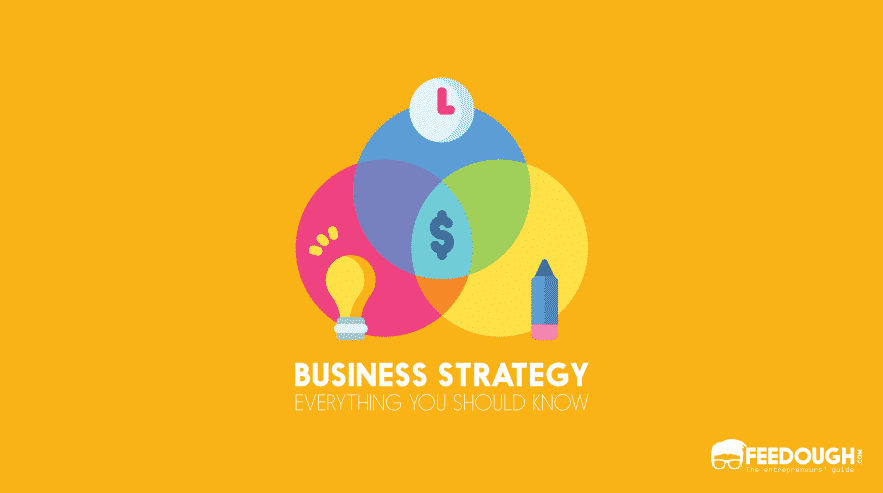‘SWOT Analysis is the critical starting point of strategic thinking.’
Earlier in 1960, when corporate planning had not met with much success, Albert Humphrey coined the term SWOT Analysis. The framework helped the companies build their business strategies; it still helps millions.
SWOT analysis simply examines internal and external factors that affect a business’s growth. It is an effective framework for helping startups and existing companies find their place in the market.
What Is SWOT Analysis?
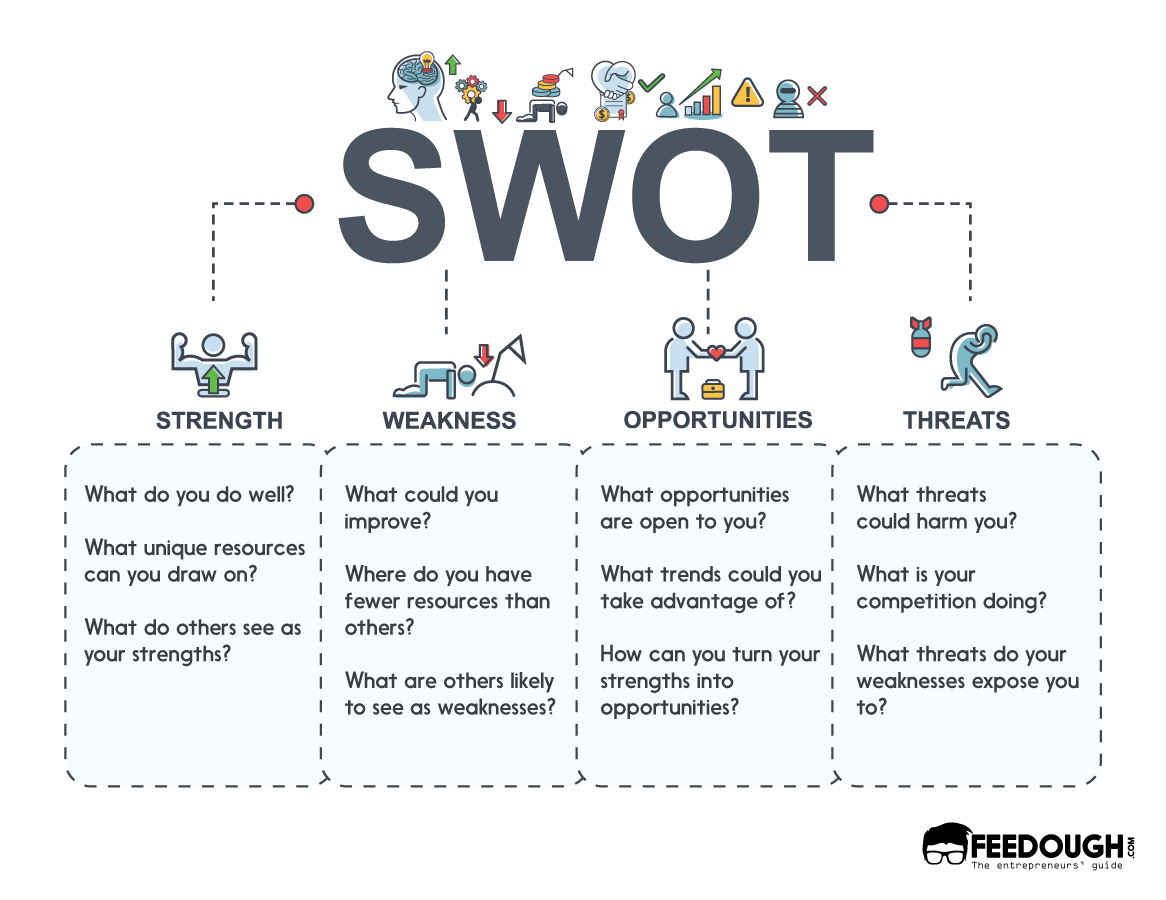
SWOT stands for Strengths, Weaknesses, Opportunities and Threats.
SWOT analysis is the study undertaken by an organisation to identify its internal strengths and weaknesses, as well as its external opportunities and threats. It is an incredibly simple yet powerful tool to build techniques, whether you are building a startup or guiding an existing company.
Strengths and weaknesses are intrinsic factors. You have control over them and can make necessary changes from time to time. Opportunities and threats are extrinsic. They depend on the larger market, outside your company. You can take advantage of opportunities and protect against threat through proper SWOT analysis.
Elements Of SWOT Analysis
As stated by its name, SWOT Analysis has four elements:
- Strengths– Internal attributes of a company which can bring successful outcomes.
- Weaknesses– Internal attributes that pose obstacles to attaining successful outcomes.
- Opportunities– External factors and trends the company can exploit and exploit.
- Threats– External factors that pose challenges and can jeopardize the company’s success.
How To Do SWOT Analysis
Before you start, here’s a SWOT analysis template for your reference:
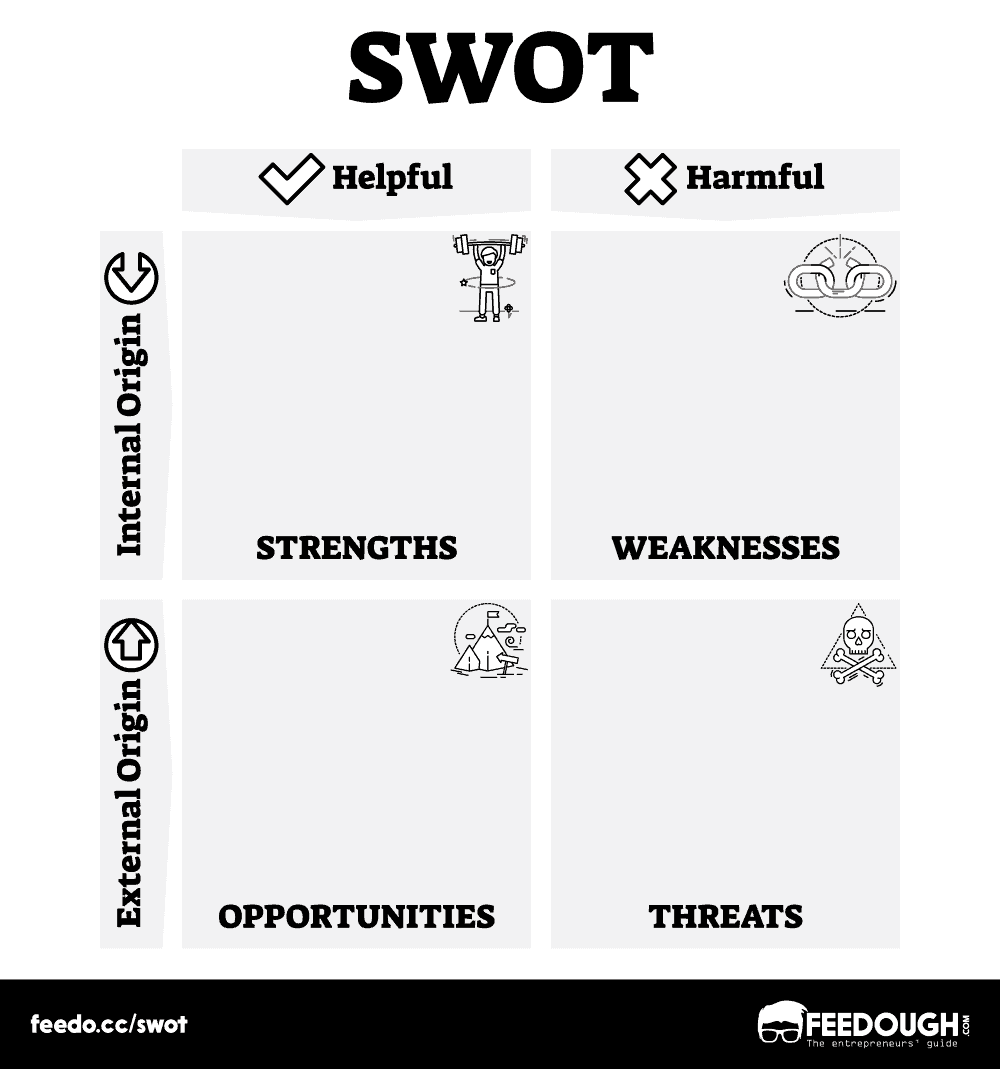
Although everyone has different ways of conducting a SWOT analysis, the following steps can guide the ones doing it for the first time or missing a step or two:
Decide On The Objective
To get the most out of your SWOT analysis, you must have a clear objective from the start. The objective is based on your analysis of your company’s internal functioning and the external market.
Define The Strengths
Identifying and listing the strengths is the most important step. Strengths are the internal factors that are favourable to a company’s growth. They are the actions or tasks that a company can perform in a way that is better than its competitors. These strengths can include but are not limited to strengths related to employees, financial resources, business location, cost advantages, etc.
To define strengths, you can review your company’s past achievements, identify factors that benefited it before, and work on enhancing those factors. Moreover, you can extract prospects for growth from areas that have potential but haven’t been exploited yet.
Keep these questions in mind while defining your strengths in the SWOT analysis –
- What makes your organisation stand out in the crowd?
- Does your business have an unfair advantage? If yes, what?
- What makes customers choose your offering over others?
- What’s your unique selling proposition?
- Are you disrupting the market? If yes, how?
Define The Weaknesses
Weaknesses are the internal factors that pose obstacles in the growth of a business. They could include a lack of new ideas, absence of new products, lack of intellectual property, or decline in market reach, etc.
To know the weaknesses, you may look back at the past failures of your business and identify the flaws you had committed then. Other strategies include comparing your offering with the competition and finding your flaws or taking customer feedback.
The goal is to eventually address these weaknesses and resolve them at the end of the SWOT analysis so that they do not harm your business in future. Critically evaluating the areas of faults and listing the mistakes committed earlier can give a clear idea of the corrective measures that need to be taken.
Keep these questions in mind while defining your weakness in the SWOT analysis –
- What are the areas of improvement in your business?
- What all should be avoided in future?
- What makes the customer lose interest in your offering?
- What do your existing customers not like about the offering?
Find The Potential Opportunities
Opportunities are those circumstances that are exploitable and if invested in properly, can give out positive results. Opportunities may thus include new technology in the market, training programs to enhance the performance of the employees, a diverse marketplace, etc.
A detailed market analysis can be a good way of discovering potential opportunities for your business. You should also listen to your potential clients and follow past leads. Having an insight into the ongoing trends can help you build effective strategies to exploit the opportunities better.
SWOT analysis includes, but is not limited to, the following opportunities –
- Favourable trends which affect your business.
- Favourable government policies which affect your business.
- Changes in lifestyle changes, social patterns, population profiles, etc positively affect your business.
Define The Threats
Threats or risks are external factors that pose challenges to a company’s growth. They are out of control, and a company cannot completely eliminate them. Yet, it can protect itself through backup plans and security measures.
Threats could arise from the natural environment as well as human influence. They could include rising unemployment, increasing competition, market uncertainty, etc. Some threats are easy to handle, while some can completely shatter your organisation’s foundations. Thus, it is important to deal with threats depending on their impact on your business.
SWOT analysis includes, but is not limited to, the following threats –
- The current and past obstacles which affect the company
- Noteworthy competitors and their strategies
- Changing trends which act against the company’s growth
- Changing government policies which act against the company’s growth
- Problem with partners and/or employees
- Company’s weaknesses which may pose as a threat in future
Develop A Strategy
After prioritizing the issues to be resolved, the next big question you need to ask is how strengths can be used to take advantage of opportunities and overcome threats and weaknesses. Depending on the SWOT analysis, business strategies could be built, taking into consideration the scope and position of the business in the market.
Importance Of SWOT Analysis
SWOT Analysis is like a self-assessment or a review of the strategies that you have been using to run your business, finding the flaws in them and then developing and designing better strategies in order to grow the same business. Following are some of the areas you can benefit in, from SWOT analysis:
Helps In Using Resources Efficiently
Every company has a limited supply of resources such as labour, production capacity, and capital. What is important is managing these resources, which can be done by evaluating strengths. This will help in better allocating these resources in a manner that will result in the highest possible growth and profitability.
Improving Business Operations
When you examine your company’s weaknesses, you should not assign blame for past shortfalls but critically examine the areas that need improvement for the business to compete more effectively. A realistic assessment of the weaknesses also helps prevent strategic blunders and provides a chance to continuously improve in all the company’s operating areas. The goal must be to turn all the current weaknesses into future strengths!
Discovering New Opportunities
Business growth requires seeking new opportunities. An intensive market analysis can help you determine your potential customer groups, product expansion strategies, and broader product distribution. A SWOT Analysis then helps you plan ahead for these factors and work on them accordingly.
Dealing With The Risks
Threat in SWOT is another term for risk. Companies can face threats beyond those posed by direct competitors. These can be threats from changing marketing or regulatory environments. These threats can have an adverse impact on the company’s performance. SWOT analysis thus helps you prepare your company for whatever challenges it might encounter.
Building A Competitive Strategy
Many companies do a SWOT analysis of their key competitors to get a picture of how the company should position itself against them. The company aims to attack the competitor’s weakness with its own strengths. SWOT Analysis shows the company that even its most powerful competitors have weaknesses that can be exploited.
SWOT Analysis Examples
The following are some examples of SWOT analyses done by some famous companies, which will inspire you and help you understand things better.
Google SWOT Analysis
The global search engine Google has revolutionized the digital world. It has made life easier by making every information available to us with just a click. It has transformed the global economy by developing game-changing operations. Corporations, customers, consumers and everyone can now easily access any kind of information anytime and anywhere.
The following Google SWOT analysis shows that it knows its strengths and weaknesses and is well aware of the current threats it faces in the global market.
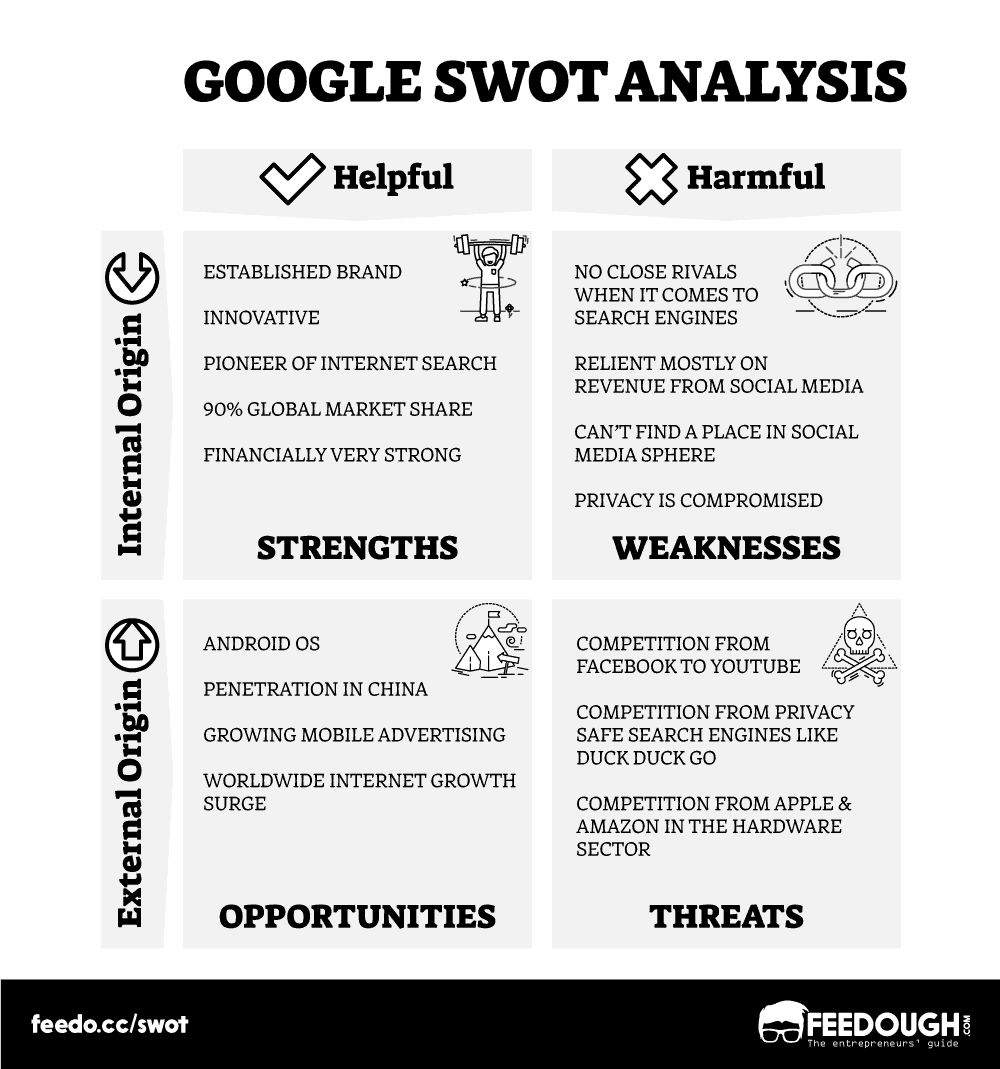
Coca-Cola SWOT Analysis
The world’s second-largest beverage manufacturer, Coca-Cola, shows how a brand can use its competitive advantage. It has become a brand which is now present in almost every household, shop, office, hotel, etc. and has many products in its arsenal.
Looking at Coca-Cola’s SWOT analysis, we can infer how it has become the world’s number-one-selling company of carbonated drinks.
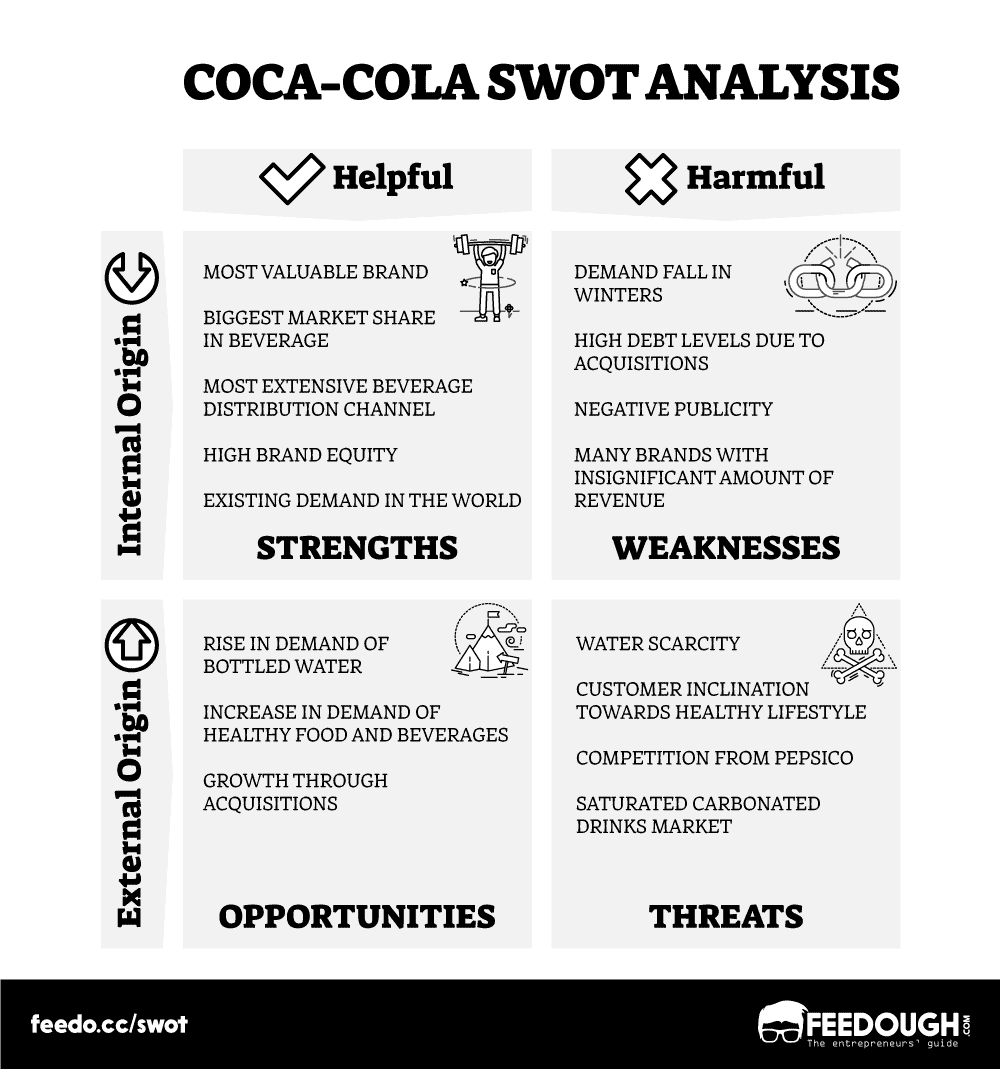
Amazon SWOT Analysis
When Jeff Bezos founded Amazon in 1994, he started the company originally as an online book store but soon converted it to a top online retailer, selling everything from A to Z. Amazon’s popularity is widespread around the globe, and it has over 310 million active users and 100 million subscribers. Since its inception, Amazon has achieved many achievements, made eye-popping profits, and launched successful products.
Amazon’s SWOT analysis tells us a lot about the secret behind its success.
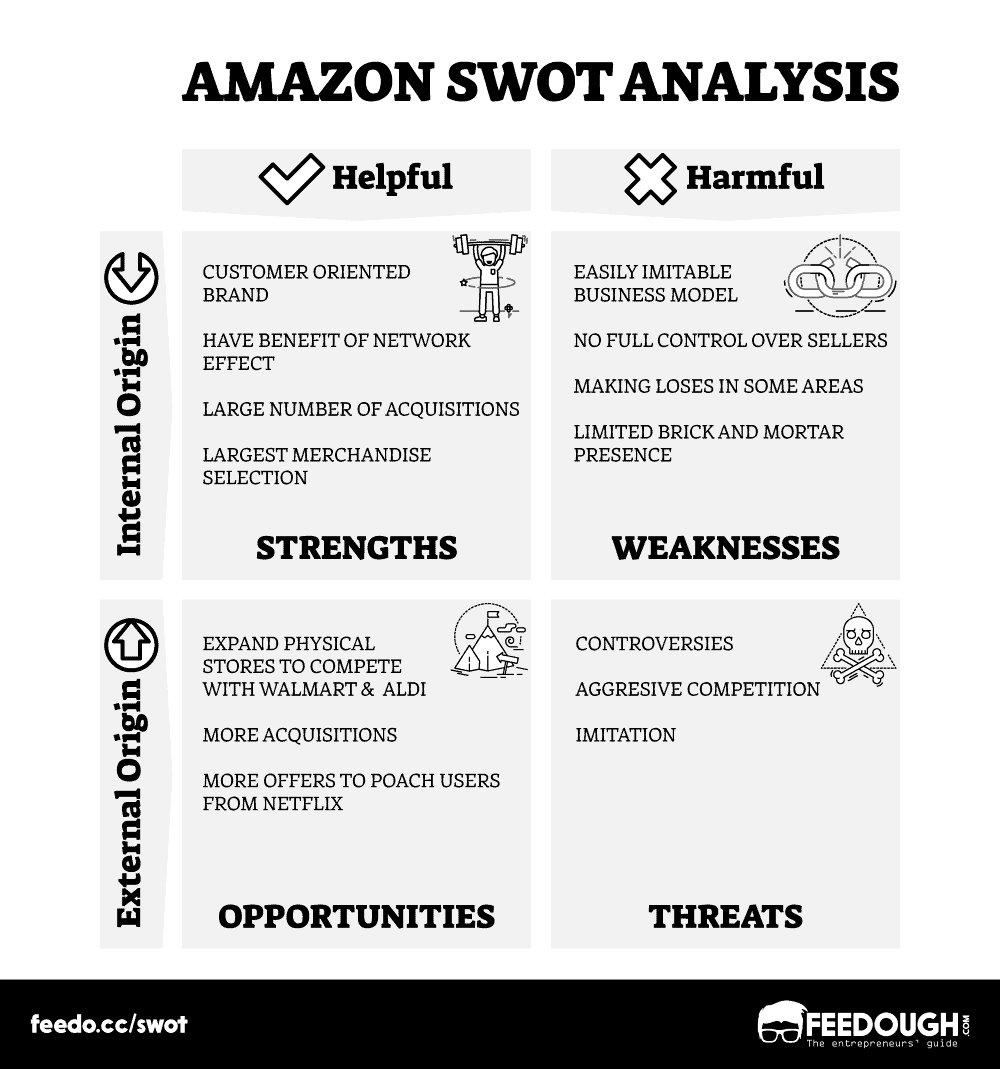
Bottom-line?
SWOT analysis is the key to a business’s growth. Until you don’t know what factors can affect your business, you can’t plan strategies for its development. It helps you assess your business internally and externally and critically examine its current position in the market. In addition, you also get to do a good amount of research on your potential customers and competitors. SWOT Analysis helps you find and eradicate your weaknesses by focusing on your strengths that can be advantageous in the near future. In a nutshell, conducting a SWOT Analysis in any kind of business is important to open new prospects while taking into consideration the flaws of the past and challenges that are to be faced in the present and the future.
A keen researcher of marketing, social entrepreneurship trends, and literature. Anannya is an experienced startup writer, business developer, and digital marketer.
